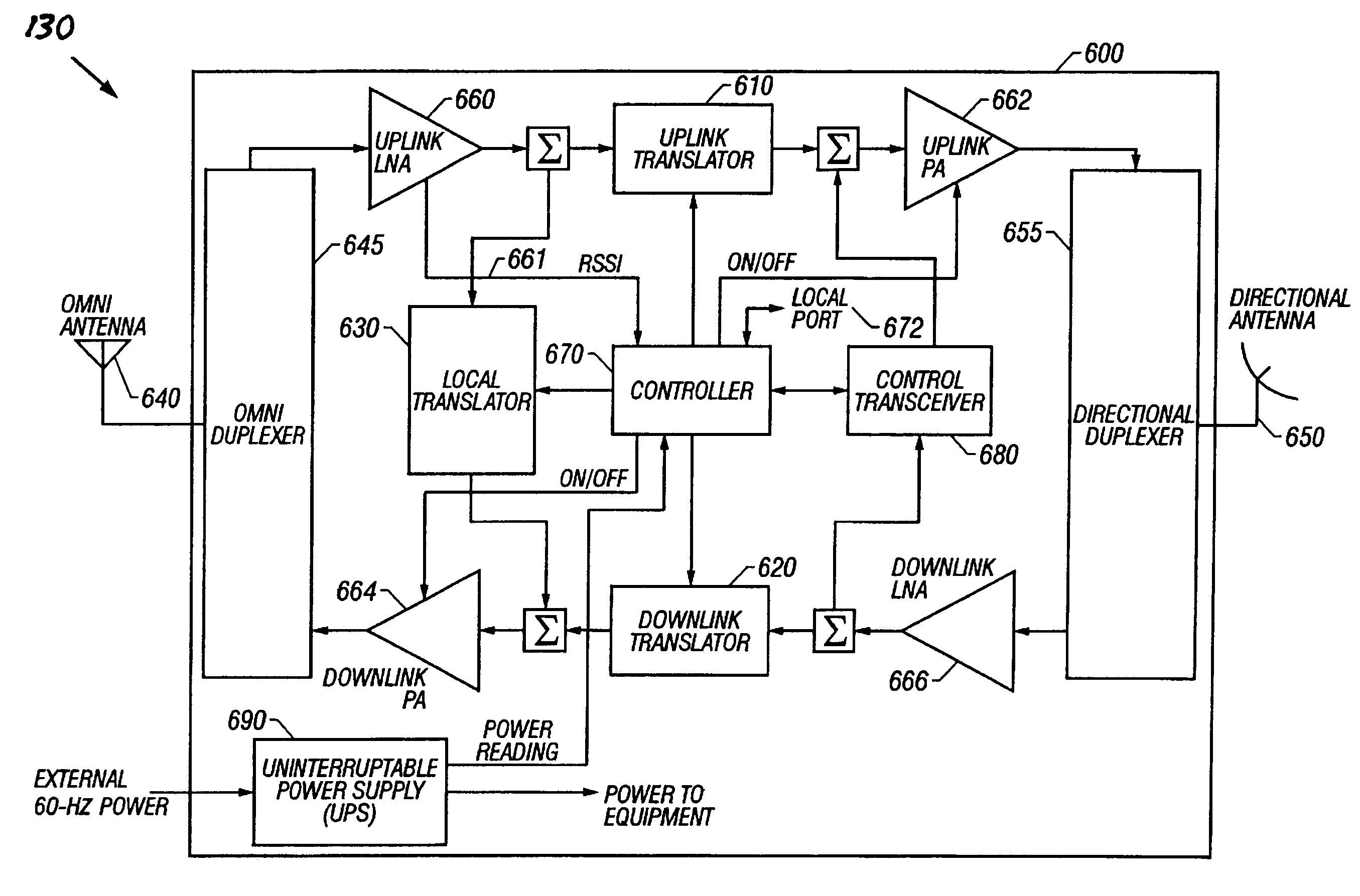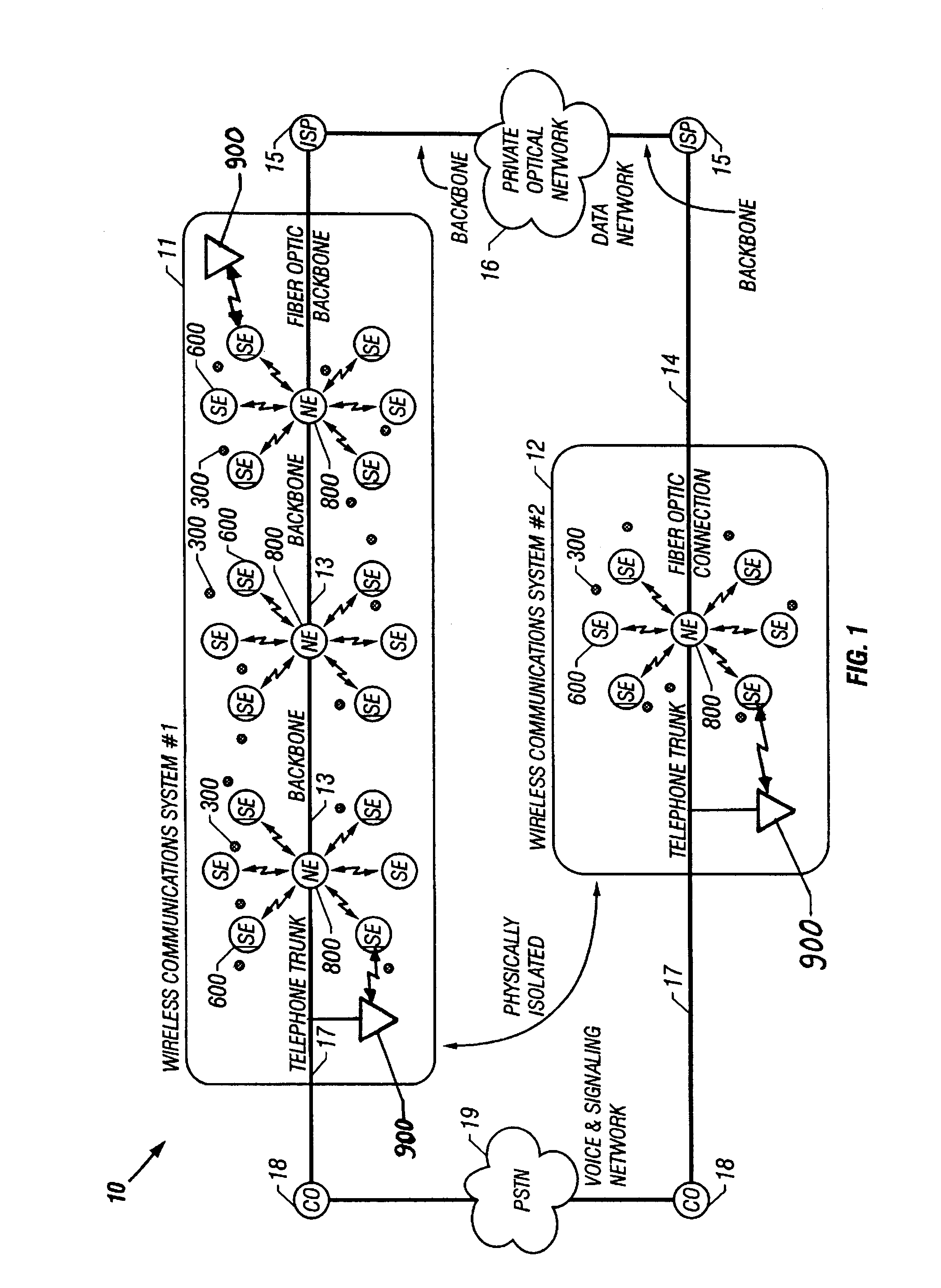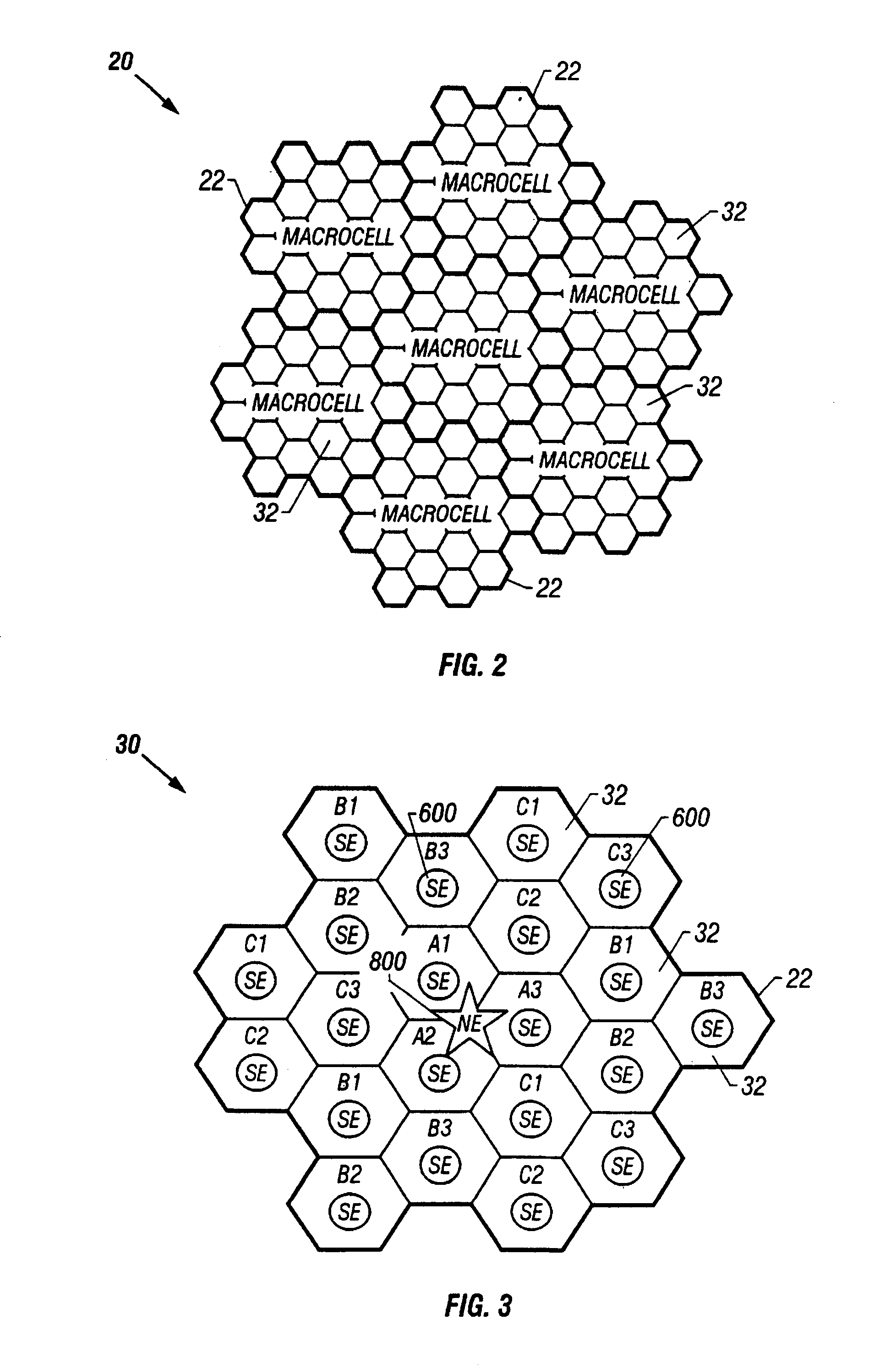Wireless communication device with multiple external communication links
a communication link and wireless communication technology, applied in the field of wireless communication systems, can solve problems such as the inability to provide a connection to a pstn, the inability to collect accurate billing information, and the inability of ldms to provide mobile stations
- Summary
- Abstract
- Description
- Claims
- Application Information
AI Technical Summary
Benefits of technology
Problems solved by technology
Method used
Image
Examples
Embodiment Construction
Turning now to FIG. 1, FIG. 1 shows a deployment 10 of two embodiments 11, 12 of a wireless communication system connected to other communication networks 16, 19, in accordance with the present inventive concepts. The wireless communication systems 11, 12 are composed of fundamental elements that include handsets 300, ComDocs 900, signal extenders (SE) 600, and network extenders (NE) 800. The handsets 300 are similar in features and functions to cellular and PCS handsets. They support two mobile wireless protocols: a novel DW protocol (DW mode) described in the present disclosure, and a secondary standard wireless protocol (roaming mode). The present invention includes the DW protocol. The secondary protocol may be selected from several standard alternative protocols. The system infrastructure for the secondary protocol is not addressed in this disclosure. The wireless communication system infrastructure (SEs 600 and NEs 800) and the DW wireless protocol are completely independent o...
PUM
 Login to View More
Login to View More Abstract
Description
Claims
Application Information
 Login to View More
Login to View More - R&D
- Intellectual Property
- Life Sciences
- Materials
- Tech Scout
- Unparalleled Data Quality
- Higher Quality Content
- 60% Fewer Hallucinations
Browse by: Latest US Patents, China's latest patents, Technical Efficacy Thesaurus, Application Domain, Technology Topic, Popular Technical Reports.
© 2025 PatSnap. All rights reserved.Legal|Privacy policy|Modern Slavery Act Transparency Statement|Sitemap|About US| Contact US: help@patsnap.com



